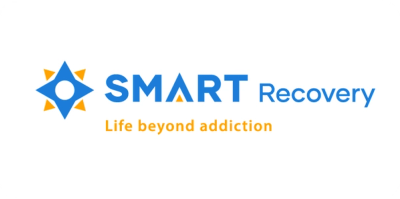How does screen time impact mental health and wellbeing?
In today's world, it's becoming increasingly difficult to disconnect from technology. From smartphones and laptops to social media and streaming services, we're constantly surrounded by screens and notifications vying for our attention.
As a result, we’re spending more time on devices than ever. In fact, the average Australian spends four hours of their spare time each day watching TV or using devices. This might not sound like much, but it adds up to about 25% of your waking hours.
While technology undoubtedly brings many benefits, it can also have negative impacts on our mental health, physical health, relationships, and overall wellbeing.
And unfortunately, many of us have trouble cutting back on our screen time—even when it’s causing problems.
“Sometimes, there’d be instances where I’d go to check a message and an hour later, I’m on social media.”
Watch this video about developing healthier social media habits for your mental health.
How can a digital detox help me?
A digital detox can provide several benefits and positively impact various aspects of your life.
Even if you think your digital habits aren’t affecting you too much, it might still be a great idea to give yourself a digital break!
Here's how a digital detox can help you:
- Improved mental health and emotional wellbeing
- Increased focus and productivity
- Reconnection with the present moment
- Increased productivity and self-reflection
- Rediscovery of offline activities
- Reassessment of digital habits and priorities
- Better sleep
How to do a digital detox
The first step to doing a digital detox is getting clear on the role technology and media play in your life.
To begin, ask yourself the following questions:
- How long do I spend using an electronic device or watching a screen each day? You can get an idea of the average amount of time you use your phone or device throughout the week with screen-time tracking functions. Instructions on how to do this with an iPhone are here and Android here. If you use your devices for work, take a look at the time breakdowns by app to separate out work from leisure time.
- How is technology making me feel? Which parts of technology, screen time and social media use are ok and feel positive? What leaves you feeling worse than before (e.g., feeling guilty, depressed, stressed, tired or ‘not enough’)?
- Am I experiencing any problems from media and technology use? Not getting enough sleep, missing out on important moments or activities, relationship problems, procrastinating on important tasks, comparing yourself to others, health problems, or neglecting self-care are some common examples of problems you might be experiencing as a result of your digital habits.
- What matters most to me in terms of my priorities and values in life? Are your technology habits aligned with these priorities? Take a step back and evaluate whether your tech habits are helping or hindering what you value most. This can help you make decisions about how to include technology in your life in a way that serves your goals and values.
After going through the above questions, you should have a good idea of what behaviours around technology use you want to change. Then, it’s time to set a digital detox goal.
Setting a digital detox goal
Goal setting is an important part of changing a habit. And in general, the more specific and achievable a goal is—the more likely you are to achieve it.
Most of us can’t (and don’t need to) cut out technology from our lives completely. So the key is to choose a specific behaviour you would like to change, then make a realistic plan of what you would like to achieve.
Here is an example of what a goal might look like:
Goal: Reduce evening screen time before bedtime to improve sleep quality.
Specific Behaviour Change: Stop using electronic devices one hour before going to bed.
Plan: Establish a consistent bedtime routine. Set a specific time to start a one-hour screen-free period before bed. Do something relaxing before bed to improve sleep quality. Make it specific. For example: One hour before bed, I’ll make myself tea, put my phone to charge in the kitchen, and read a book in my room.
When writing out your goal, it can be helpful to mention the benefits(s) you predict as a result of your behaviour change. And most importantly, make a time commitment.
More goal examples:
- For the next 4 weeks, I’m going to stop watching TV and using my phone by 8pm every weeknight so I can improve my sleep.
- When I’m with another person over the next 2 weeks, I’ll leave my phone on silent and in my pocket so it doesn’t distract me from our conversation.
- I currently spend 6 hours on social media per day. For 7 days, I’m going to limit my use to 4 hours max each day by setting time limits on my apps.
- To improve my focus and productivity over the next 3 months, I’ll leave my phone in another room when I’m working or studying.
- I know I don’t feel good after scrolling Instagram and I have trouble controlling how much time I spend on it. I’m going to uninstall it from my phone and computer for 2 weeks.
The time frame can be as short or long as you want. But keep in mind that it can take a long time to break strong digital habits.
A week or two is a good starting point. However, for a habit that’s very entrenched or is causing you harm, a month could be a better choice.
Once you’re clear on your goal, check out the tips below to help make your digital detox a success.
Strategies for a successful digital detox
Habit change is always hard. And when it comes to breaking digital habits, there’s the added challenge of features that software companies use to try to capture your attention.
Fortunately, there are ways to bypass most of these features. Plus, certain strategies (like having an accountability partner) are useful when trying to break habits. In general, the more tools you have in your ‘digital detox toolkit’, the more likely you are to succeed.
Before you start your digital detox, be sure to read these strategies for success so that you go in fully prepared:
Strategies for success
- Turn off all non-essential notifications. You might also like to use the “do not disturb” (or focus on iOS) function at certain times to shut notifications off completely.
- Log out of, or uninstall social media accounts for your detox period.
- Remove addictive apps from your home screen to avoid being tempted to use them each time you unlock your phone.
- Keep track of your screen time and set a time limit for apps you’re trying to cut down on. Instructions on how to do this with an iPhone are here. If you’re on Android, learn how to check your screen time and set a time limit for apps.
- Use digital tools to block access to your newsfeed on social media or entire websites. Some examples are #blockit (only for iOS),Stay Focused: Site & App Focused (Android), SelfControl (for MAC) and StayFocused Google Chrome extension for PC.
- Find a digital detox buddy and keep each other accountable. Besides providing each other with moral support, you could set each other’s passwords for app time limits so you can’t unlock them yourselves.
- Turn your phone screen to greyscale to make it less attractive and stimulating. You can find instructions for iOS here and for Android here.
- Leave your phone at home or in a separate room when you don’t need it. Some examples might be when you’re at work, going for a walk, shopping (just remember your bank card!), or going to the bathroom.
- Make your bedroom a phone-free zone. This might require getting an alarm clock and setting up a charger in another room.
- 20-20-20 rule: Take a break every 20 minutes, for 20 minutes, at least 20 metres away from your device.
Consider long-term changes
At the end of your digital detox, it’s important to reflect on how things went and decide if you would like to make some long-term changes.
Some examples of changes you might decide to implement are:
- Logging off and shutting down all your devices by a certain time each night
- Leaving your phone in another room when you’re working, studying or socialising
- Cutting down the amount of social media platforms you use (or cutting them out altogether)
- Having certain ‘TV-free’ or ‘game-free’ days each week
- Setting a limit on screen time each day/week.
To help decide which changes to make, ask yourself:
- What were the positives about the detox?
- Were there any negatives?
- Do I feel more balanced and in control of my technology and media usage?
- Did the detox help with my mental or physical health?
- Should I extend the detox or try it in another form?
- Are the changes I made something I would like to continue with, even if in a slightly different form?
Whether or not you decide to implement long-term changes, a digital detox can teach you a lot about your relationship with technology and media.
By taking a break from the constant barrage of notifications, social media feeds, and other digital distractions, you can improve sleep quality, gain clarity, reduce stress, and better your overall health and wellbeing.






